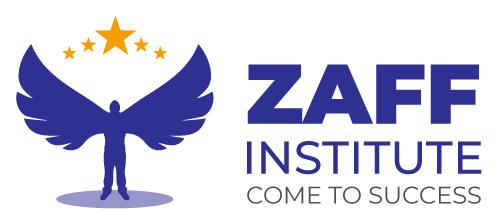
Creating websites involves a mix of front-end and back-end development, each requiring specific programming language to bring a site to life. In 2025, certain programming languages continue to dominate the Web Development landscape due to their versatility, ease of use, and community support.
Here’s a look of programming languages for creating websites in 2025:
1. JavaScript:
JavaScript remains the most popular Programming Language for web development, especially for front-end development. It’s essential for creating interactive and dynamic websites. Here’s why JavaScript is a top choice:
Versatility: JavaScript can be used for both client-side (front-end) and server-side (back-end) development with frameworks like Node.js.
Rich Ecosystem: A vast ecosystem of libraries and frameworks like React, Angular, and Vue.js enhances JavaScript’s capabilities, making it easier to build complex applications.
Community Support: A large developer community means a wealth of resources, tutorials, and tools are available to help developers of all skill levels.
2. Python:
Python is known for its simplicity and readability, making it a favorite among beginners and experienced developers alike. While traditionally used for back-end development, Python’s versatility extends to web development as well. Key benefits of Python include:
Ease of Learning: Python’s clear syntax and readability make it an excellent choice for those new to programming.
Frameworks: Django and Flask are two popular Python frameworks that streamline the web development process, offering built-in functionalities and tools for creating robust web applications.
Scalability: Python’s scalability and extensive libraries make it ideal for projects ranging from small websites to large, complex applications.
3. HTML/CSS:
While not programming languages in the traditional sense, HTML (Hypertext Markup Language) and CSS (Cascading Style Sheets) are the foundational languages of the web. They are essential for structuring and styling web pages. Their importance lies in:
Structure: HTML provides the basic structure of web pages, using elements and tags to define content like text, images, and links.
Styling: CSS controls the appearance of web pages, allowing developers to create visually appealing designs with layouts, colors, fonts, and animations.
Accessibility: Mastery of HTML and CSS is necessary for creating accessible and user-friendly websites that perform well across devices.
4. PHP:
PHP (Hypertext Preprocessor) is a server-side scripting language widely used in web development. It powers a significant portion of the web, including popular content management systems like Word Press. PHP remains relevant in 2022 due to:
Simplicity: PHP is easy to learn and integrate with HTML, making it a go-to language for beginners and seasoned developers alike.
Frameworks: PHP frameworks like Larval and Symphony simplify and accelerate the development of web applications by offering reusable code and robust features.
Flexibility: PHP is highly flexible and can be used to create dynamic content, manage databases, and handle form data efficiently.
5. Ruby:
Ruby, particularly when used with the Ruby on Rails framework, is known for its simplicity and productivity. It’s an excellent choice for building web applications quickly and efficiently. The benefits of Ruby include:
Rails Framework: Ruby on Rails, a full-stack framework, emphasizes convention over configuration, allowing developers to focus on building features rather than configuring their environments.
Productivity: Ruby’s clean and concise syntax enables rapid development, making it ideal for startups and projects with tight deadlines.
Community: Ruby on Rails has a strong and active community, providing plenty of resources, gems (libraries), and plug-in to extend the framework’s capabilities.
6. Typescripts:
Typescript is a superset of JavaScript that adds static types, making it easier to catch errors during development. It’s increasingly popular for building large-scale applications due to its enhanced features. Why Typescript is gaining traction:
Type Safety: Typescript’s static typing helps catch potential errors at compile time, reducing bugs in complex applications.
Interoperability: Typescript is fully compatible with JavaScript, allowing developers to gradually adopt it in existing JavaScript projects.
Enhanced Tooling: Typescript provides better tooling support, including improved code completion, refactoring, and navigation, which increases developer productivity.
7. Go (Golang):
Go, or Golang, is a statically typed, compiled language designed by Google. It’s known for its simplicity, efficiency, and performance, making it a strong choice for back-end development. Go’s key advantages include:
Performance: As a compiled language, Go offers superior performance, making it ideal for building high-performance web applications.
Concurrency: Go’s built-in support for concurrency with go routines makes it well-suited for handling multiple tasks simultaneously, crucial for modern web applications.
Simplicity: Go’s straightforward syntax and minimalistic design make it easy to learn and write clean, maintainable code.
8. Java:
Java has been a staple in the development world for decades, and it continues to be relevant in web development, especially for large-scale enterprise applications. Java’s strengths include:
Stability: Java is known for its stability and scalability, making it ideal for building large, complex web applications.
Frameworks: Java frameworks like spring and Hibernate provide robust tools and libraries for creating enterprise-level applications with security and performance in mind.
Cross-Platform: Java’s “write once, run anywhere” philosophy ensures that code can run on any device with a Java Virtual Machine (JVM), making it versatile across different environments.
In 2025, the choice of programming language for creating websites depends largely on the project requirements, the developer’s expertise, and the specific features needed. At ZAFF Institute, we emphasize the importance of selecting the right language, as JavaScript remains the cornerstone of front-end development. In contrast, languages like Python, PHP, and Ruby continue to excel in back-end development. Meanwhile, emerging languages like Typescript and Go are gaining popularity for their modern features and performance advantages. By mastering these languages, developers can create powerful, efficient, and scalable websites that meet the demands of today’s digital landscape.







0 Comments